Merlins, Kestrels
Falcons
Merlins and Kestrels are the only falcons likely to be encountered around the Lake. Of these two, records suggest that the Kestrel will be seen more frequently, but my experience is the reverse. Indeed, the only Kestrel picture shown here was taken by a friend.
Both of these birds are small. Their long, narrow, pointed wings are optimized for speed in the open air. They are most likely to be found near clearings where their speed enables them to capture other birds on the wing.
There are three different subspecies (races) of merlin in North America. The local one is designated variously as either Taiga or Boreal (Falco columbarius columbarius), and all the pictures on this page (apparently) show it. The variations in colour reflect variations in sex and age.
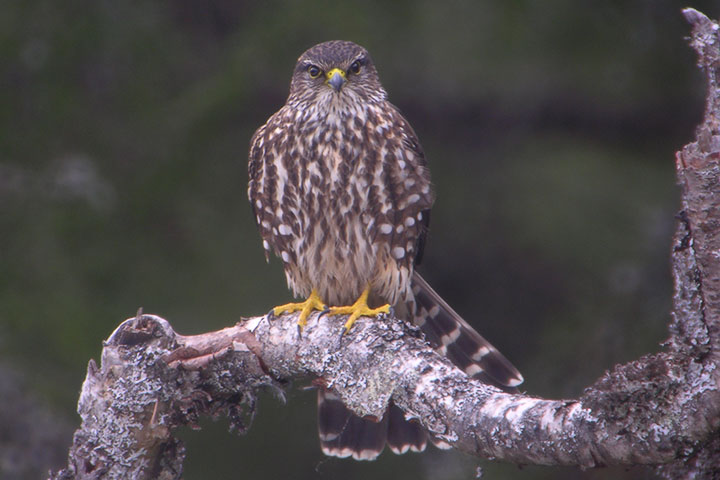 A female Merlin has just spread her tail in preparation for flying off and capturing a meal. It had been sitting on the tree limb for some time just waiting for such an opportunity.
A female Merlin has just spread her tail in preparation for flying off and capturing a meal. It had been sitting on the tree limb for some time just waiting for such an opportunity.
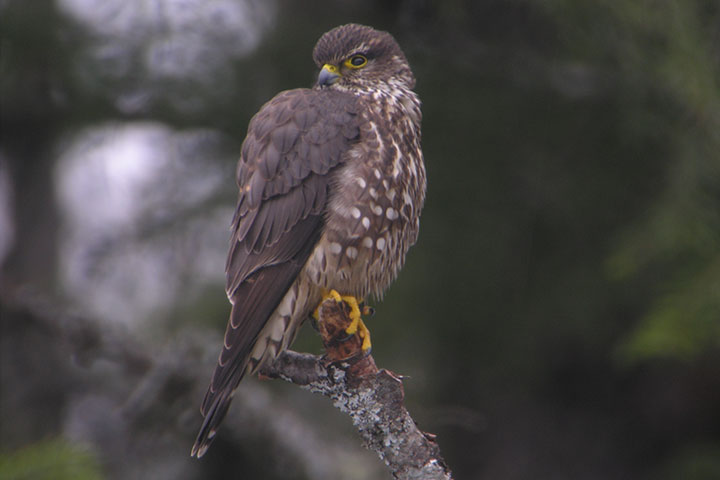
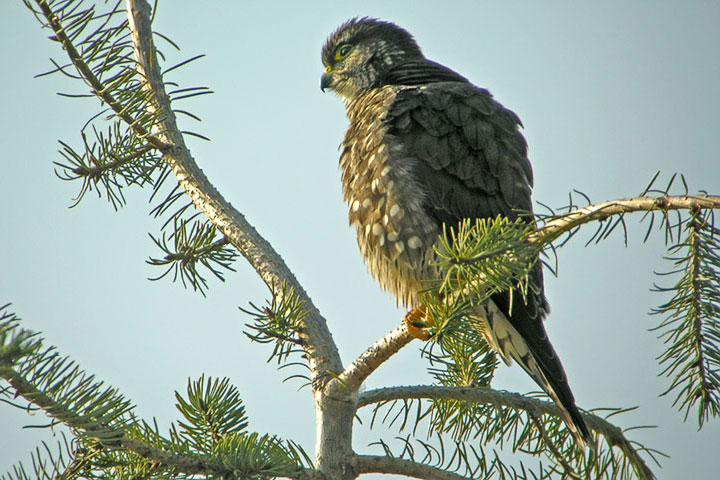

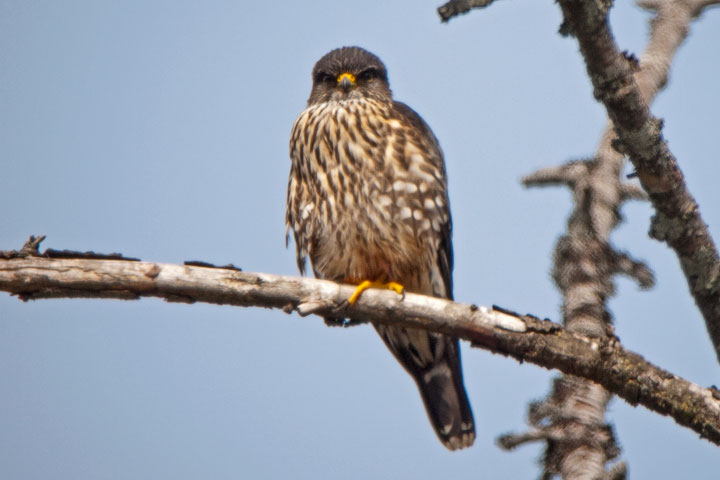 This block of four pictures illustrates the colour variation seen in local Merlins. Most are greyish, but perhaps a quarter are brownish. In the upper left, the bluish–gray crown and upper back reveals this to be a male. The two on the right are either female or young males.
This block of four pictures illustrates the colour variation seen in local Merlins. Most are greyish, but perhaps a quarter are brownish. In the upper left, the bluish–gray crown and upper back reveals this to be a male. The two on the right are either female or young males.
 This Merlin is calling with staccato whistles. It is probably a male.
This Merlin is calling with staccato whistles. It is probably a male.
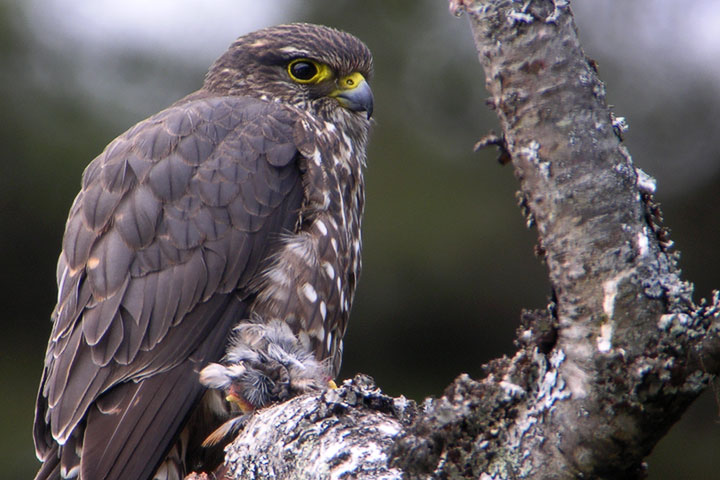 Merlins catch and eat other birds as is evident from the feathers and talons from its victim on the tree limb by its side.
Merlins catch and eat other birds as is evident from the feathers and talons from its victim on the tree limb by its side.
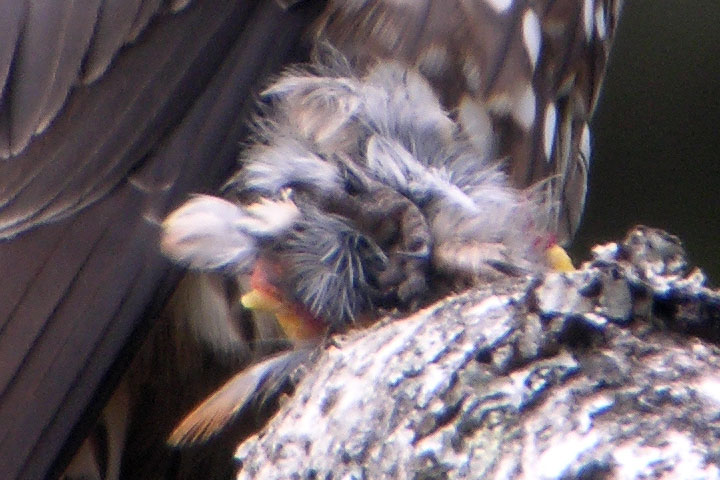 A detail of the unfortunate meal.
A detail of the unfortunate meal.
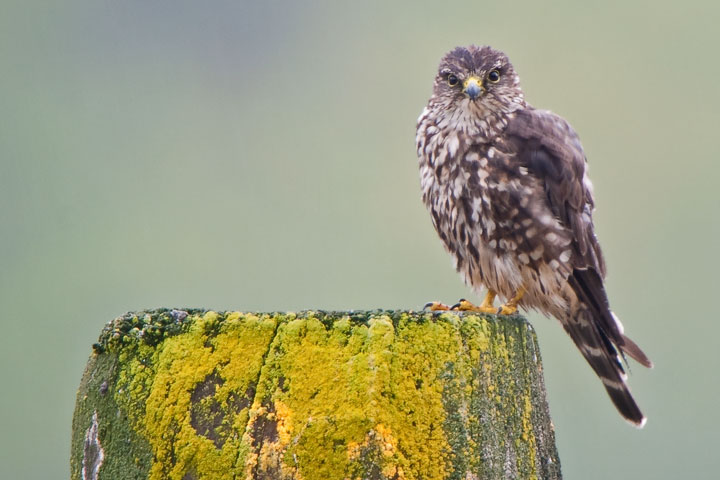 I normally see a Merlin hunting from a tree, but this one was on a piling out over the waters of the Lake.
I normally see a Merlin hunting from a tree, but this one was on a piling out over the waters of the Lake.
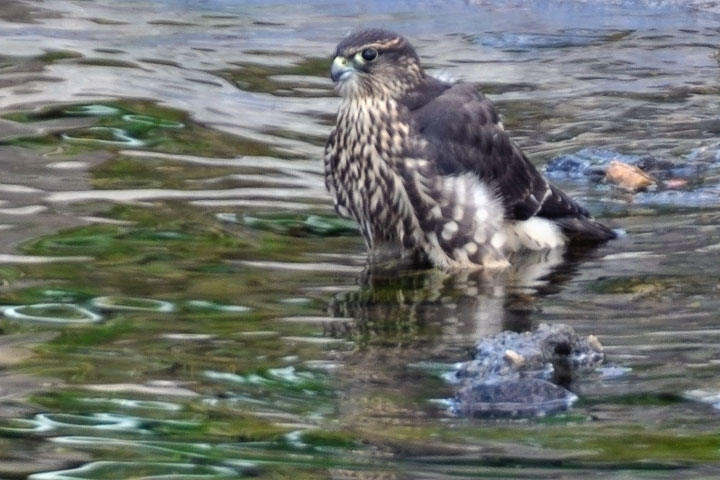 On a hot day and this
On a hot day and this
 Mallards will approach almost anything and on this occasion came over to see the merlin.
Mallards will approach almost anything and on this occasion came over to see the merlin.
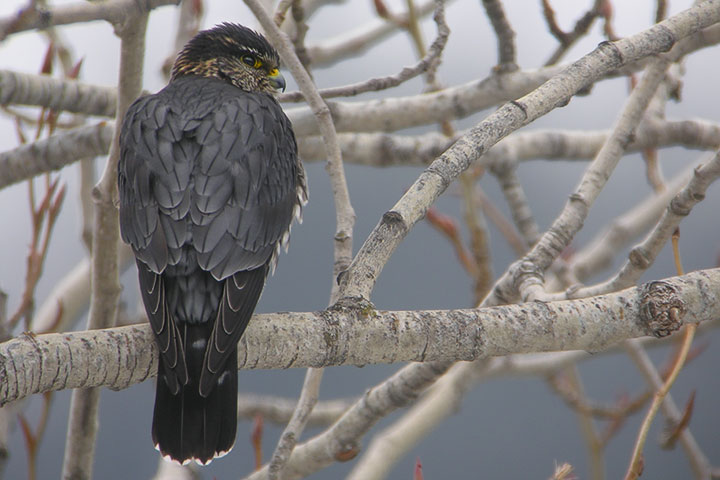 Watching from a tree limb is a male Merlin.
Watching from a tree limb is a male Merlin.
 The Kestrel is the smallest falcon in North America. The bluish edge to the wing shows this to be a male.
The Kestrel is the smallest falcon in North America. The bluish edge to the wing shows this to be a male.  Doug Thorburn
Doug Thorburn
Information from Wikipedia: Merlin, Kestrel.
![]()